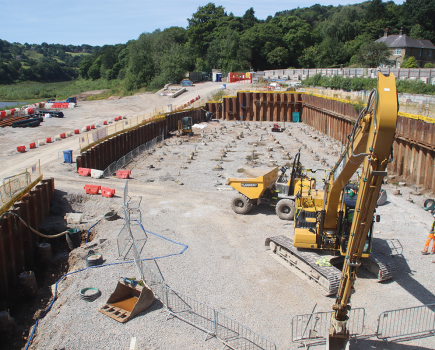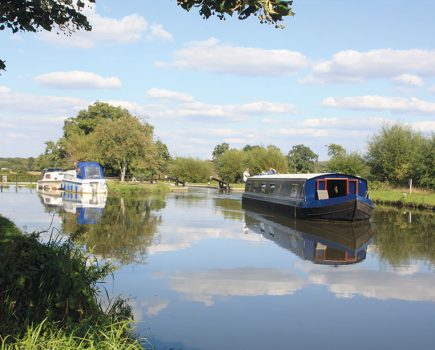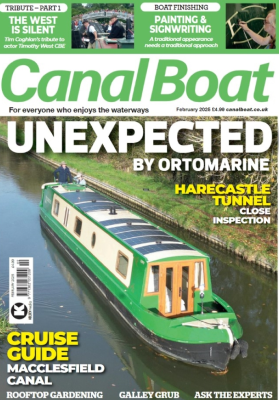After the nation offered its solemn gratitude to the fallen of World War One, Tim Coghlan was determined to tell the story of the forgotten boatmen

By the time the Great War had ended in 1918, hardly any community – town, village or rural – had not been involved in it, and suffered the loss of some of its people – men and women. In the canal and farming Northamptonshire village of Braunston, which I and others have been examining very closely over the past four years, the huge loss of life amounted to 31 dead.
This was somewhat disproportionate to that of other local villages of a similar size, where the names on the war memorials are about a third of that number. And of those who survived, we now don’t know how many returned to Braunston, severely wounded or mentally scarred by having seen the horrors of it all.
Of those 31 men who died, we know that 19 of them did so as soldiers in France and Belgium. Two more died in the Salonika, northern Greece, one in Syria, and one in Mesopotamia, in what is today Iraq. Two died serving at sea with the Royal Navy.
There are in addition six whom we have been unable to trace in terms of their service record. So these men of Braunston served and died on many Fronts. For them it was indeed the first world war.

These men were for the most part simple, country folk, who would have previously known nothing of war nor understood the cause for which they were now fighting – farm labourers, a farrier, a domestic groom, a cowman and a postman, amongst others. Nine of them were, or could well have been boatmen, with little if any education, attracted no doubt by the prospect of high adventure and the higher wages offered by the King’s Shilling.
However very little is known about the actual role of our boatmen in World War One. The reason for this is quite simple: the boatmen were very much an isolated and illiterate community at the outbreak of war. Those who became directly involved in it, seem to have left nothing in terms of personal accounts, or even letters home or diaries – which are plenty-fold amongst the educated classes.
Because of this lack of information, I and other canal-history enthusiasts of the period, have been trying to piece together what little is known. To illustrate the problem, I wrote in May 2014 to Val Roberts, who has been for many years the stalwart editor of the Historic Narrow Boat Owners Club’s excellent Newsletters, which together contain numerous well-researched articles on canal history and the boatmen.
‘Do you have any info on WWI and the canals? Has anything been written up in the past in the newsletter? It is frightening just how little there is out there.’ Her reply was brief, ‘Sorry Tim, I don’t have anything whatever.’

Four years on and little has been added to that little we knew then. I am now only aware of one new photograph of a boatman who was killed – David King, who will feature in the next issue.
And today I only know of something like ten photographs of boatmen in their Army uniform, who survived. Two are of the grandfathers of former working boatwomen Alice Lapworth (73), who is still alive and well, and assisted David Suchet on the Raymond when opening this year’s Braunston Historic Narrowboat Rally.
Her grandfathers were both Mersey Weavers, working the Pottery canals and rivers, and both it would appear – from what we can see of their cap badges – to have served in the North Staffordshire Regiment. And both seem to have survived unharmed – only a quarter of those who served on the Western Front were actually killed. But what either did in WWI, Alice and her surviving siblings know nothing.
So what did the boatmen do? At the outbreak of war in 1914, there was no military conscription, and it did not really come in until 1916. From the outset, the boatmen were seen as an important reserve occupation, vital in the movement of heavy goods, especially iron and coal, which were essential to war production.

Whilst military service remained voluntary, there was an hysteria towards fit and able men who seemed to be shirking the war – especially amongst women who had lost husbands ,and brothers. To overcome this, the Government issued an ON WAR SERVICE badge to wear for those in essential war production, which included the boatmen.
However many young boatmen did volunteer for the Army – for a variety of reasons, including the relatively good pay, getting away from the crowded living conditions on the boats, and the excitement of going to France to fight, and being with their pals. They tended to join the county regiments along the canal routes. The Braunston boatmen volunteers mainly signed up with the Northampton and Warwickshire regiments. Further south it was the Ox & Bucks and the Middlesex, and further north, the Staffordshire and Manchester regiments, and so on.
At the outset of the war, the Government pledged not to send teenage volunteers to the Front, and volunteering was only for those over eighteen. But the recruiting sergeants soon overlooked these requirements, and turned a blind eye to the ruses used to join up.
A young Kendall from a Braunston-based boating family is recalled by his great nephew Dave – who maintains the family tradition of living in Braunston, and working as a yard hand at Braunston Marina.

Using his much older brother’s birth certificate, the 14-year-old volunteered in 1914, and amazingly survived the war. But he was a lucky one.
His cousin Clarence Kendall, joined the Bedfordshire Regiment, and was one of the Braunston six that were killed. He survived until March 23, 1918, when he died during the great German March offensive. He was only 19, and has no known grave.
Braunston man was Harry Lewin joined the Northamptonshire Regiment at the outset and was killed in action in northern France as early as May 9, 1915, aged 17. The 1911 Census has him with his parents aboard the nb Venice at Middlewich, recorded as one of only two surviving children, showing the scale of loss and human suffering for the families.
In 1916, all unmarried boatmen under the age of 25 became eligible for call-up. After the fiasco of the Battle of the Somme later that year, it was commonly agreed that the bad communications to the Front were partly to blame. Prime Minster Lloyd George appointed Eric Geddes, Goods Manager of the large and successful North Eastern Railway – known as a man of push and go – to take charge of all transport in the British Sector, sending him to the Western Front with the rank of Major General.

Part of Geddes’ reforms were for the two inland waterways leading to the British Sector – the Pas de Calais to Ypres and the River Somme from the Channel coast to the Front at Peronne – to be taken over and run by British boatmen.
They would enlist as sappers (privates) in the Royal Engineers, Inland Waterways and Docks. Some boatmen who had already joined the Army were pulled out of the line to join the sappers as Geddes did not want their talents wasted as cannon fodder.
Others were recruited from the major canal carriers like Fellows, Morton & Clayton,(FMC) some of whose boatmen were already experienced in operating steam-motorised, rather than horse-drawn boats.
One FMC man to join up was the recently married Braunston boatmen Michael Ward. He enlisted in late 1916, having previously worked amongst others, on the steamer Vulcan. His wedding photograph at a church near the Paddington Arm of the Grand Union Canal, shows him wearing his On War Service badge. Ward was sent for training on the wide-beamed boats of the Kennett and Avon Canal at Devizes, before being sent over to France.

His work there would have involved moving goods and troops to the Front, and coming back, bringing out the wounded on specially built barges, manufactured near Dover. Capable of making a sea crossing, they were motored across the Channel to France.
Whilst being a boatman was much less hazardous than being on the Front line, the boatmen were at times well within the range of the guns and attacks by German planes. His daughter Rose Whitlock told me in 1996 that on one occasion a kind French woman had offered to go and get him a drink from a nearby tavern. As she was walking back and only a few hundred yards away, he saw her hit by a shell and blown to pieces.
Ward was amongst the lucky ones, and returned safely in 1919 to meet his wife Susan and for the first time his two-year-old daughter Rose, who was being carried by her pregnant mother when he departed for the Front.
Susan had spent the remainder of the war working in the boatyard at Batchworth Locks, Rickmansworth, and living with her daughter in a little lockside cottage which has long disappeared. On one occasion, Susan was working on a boat in one of the double locks, which was empty, when a Zeppelin dropped a bomb, which hit the other lock, causing mayhem. Miraculously Susan survived. Now the war was also being fought on Home Front.

Ward was given a special medal for the spotlessly-clean way he had kept his boats on the Western Front. On discharge he was allowed to keep his uniform, which he wore on the canals for at least another 12 years. After the war he became a boatman again – now for canal carrier L.B. Faulkner of Leighton Buzzard – for whom he worked a pair of horse-drawn boats. A photograph survives of him frozen in on the Ashby Canal in 1929, with his wife and now two young daughters.
Our research of FMC boatmen who went to Front found the rare surviving war records of one Braunston boatman James William Higson – the vast majority of World War One service records were destroyed in the bombing of Kew archives in WWII.
Known as Will, per the 1901 Census, he was living with his retired boatmen grandparents in Braunston. He next appears on record in 1916, when according to his Record of Service Paper, he bravely volunteered to join up on March 2, 1916, but was not enlisted until May 30, 1917.
His Record of Service Paper for 1917, though brief, gives some fascinating information. Bill was a boatman aged 24 years and 10 months. He gives his address as C/o Fellows Morton & Clayton, Fazeley Street, Birmingham, and he is a mere 4ft 11½ins but with a ‘fully expanded chest of 37 inches’.
His next-of-kin was his grandmother Mrs Higson of 15 Cross Lane, Braunston. Having enlisted, he was sent for training on wide-beamed boats on the canal at Devizes, and then over to France on December 15, 1917. Nothing is known of his time there, but he was honourably discharged on July 27, 1918 on the grounds of being sick – his illness not stated. It is possible that he succumbed to the Spanish Influenza that was sweeping Europe at the time. But he survived, and later continued working for FMC until after World War Two.
The result of this exodus of boatmen to the Western Front, put pressure on those who remained at home such as Arthur Bray. He was just 11 when he was made to work a horse-drawn boat. With his fourteen-year-old brother as captain, the pair collected stone from the canalside quarry just north of Nuneaton and took it wherever it was needed, loading and unloading was done by hand.
The hospital barges for bringing out the wounded caught the public imagination. The Times newspaper ran a campaign to raise funds for having them built as early as October 1914. Its correspondent wrote: “The use of barges is nothing less than an inspiration because the barges render possible what is impossible by any other means – treatment while in the course of transport.”
Wilfred Owen was killed at the age of 25 on November 4, 1918 during the crossing of the Sambre-Oise Canal, whilst attacking a machine gun post on the far bank. His tragic death was only a week before the war ended.
Owen was not the only one to die in the closing stages of the war. 3,700 combatants from both side were killed on the morning of the November 11, before news of the Armistice reached the Front lines. And only days before, another Braunston FMC boatman died of now unknown causes on November 8 in a hospital in Calais, aged 21.
Because the boatmen community was for the most part an itinerant one – with no home village or town where their names could be included in the local Roll of Honour – a special Act of Remembrance will be held on Remembrance Sunday.
A cascade of 100,000 poppy petals was released by CRT staff and canal volunteers from the Anderton Boat Lift in a poignant tribute to the forgotten boatmen of WWI. It was a fitting tribute to the boatmen of World War One. We will indeed remember them!
Wilfred Owen
The hospital barges also caught the imagination of the young soldier- poet Wilfred Owen. In the Spring of 1917, whilst behind the Front at the lock a Cerisy on the canalised River Somme, he saw a hospital barge coming down it. Own was inspired to write poem Hospital Barge at Cerisy – one of only a few published in his lifetime, a verse of which is reproduced here:
Budging the sluggard ripples of the Somme,
A barge round old Cérisy slowly slewed.
Softly her engines down the current screwed,
And chuckled softly with contented hum,
Till fairy tinklings struck their croonings dumb.
The waters rumpling at the stern subdued;
The lock-gate took her bulging amplitude;
Gently from out the gurgling lock she swum.
Jack Wain
The young boatman-volunteer Jack Wain. Once trained, kitted out and ready to go to the Front, soldiers were formally studio-photographed for their families. Young Jack is seen here in the uniform of the North Staffordshire Regiment. Nothing is known about his time in France, except that he survived. Like so many, he never talked about it. After the war, he went back to canal carrying with the Mersey-Weavers, which he did throughout WWII. He died in the 1950s and is buried in Stoke-on-Trent.
Image(s) provided by:
Archant







